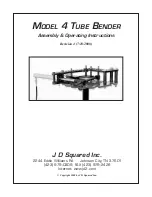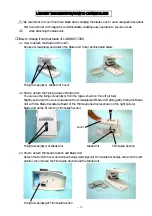
Pag.
64
English – Inglés - Anglais
9.- WATER TREATMENT
Water is a chemical element, containing
always, in more or less quantity, diluted salts
and gases. When the water evaporation occurs,
gases escape together with the vapours, while
salts settle out. In the operation of the
evaporative condensers that means that the salt
content in the circulating water is increasing
continuously.
If no special measures were taken, the
continuous accumulation, even of small quantity
of salts, would produce such a concentration of
salts, that, after reaching the solubility limit, it
would lead to the formation of scale or
incrustations. Besides, these waters, rich in
salts, offer an ideal breeding ground for algae,
seaweed and other small living organisms,
especially when the cooling water also contains
phosphates, nitrites, iron and other organic
substances.
In the operation of the evaporative
condensers, due to the spraying and
evaporation of part of the circulation water, an
escape of carbonic acids takes place, which
facilitates an acceleration of scale formation.
To avoid inadmissible salt enrichment in the
water circuit, some simple measures must be
taken; for example, constant blow-down of a
certain amount of the circulation water or, in due
time, the complete purging of this flow. These
two measures ask for about the same flow rate
of make up water, although, in general, the
former is preferred, due to the fact that no losing
of time is necessary to implement it.
If the salt content become so high that
exceeds the admissible limit, even reverting to
continuous blow-down of part of the circulation
flow, the formation of scale could not be
prevented. In this case the water must be
treated.
Français– French –Francés
9.- TRAITEMENT DE L’EAU
L’eau est un élément chimique qui contient
toujours, en plus ou moins grande quantité, des
sels diluées et des gaz. Quand l’évaporation de
l’eau se produit, il apparaît une fuite de gaz et
de vapeur, tandis que les sels se sédimentent.
Dans le fonctionnement des condenseurs
évaporatifs, cela signifie que le contenu en sels
du débit d’eau en circulation augmente
continuellement.
Si on ne prend pas les mesures adéquates,
l’accumulation continuelle de sel, même en
petites quantités, produirait une telle
concentration de sel que, une fois atteinte la
limite de solubilité, conduirait à la formation de
dépôts. De plus, ces eaux, enrichies en sels,
représentent un champ idéal d’alimentation pour
les algues et autres petits êtres vivants,
principalement quand l’eau de réfrigération
contient des phosphates, nitrites, fer et autres
substances organiques.
Pendant le fonctionnement condenseurs
évaporatifs et à cause de la pulvérisation et
l’évaporation d’une partie de l’eau en circulation,
une fuite des acides carboniques apparaît,
entraînant une accélération de la formation des
dépôts.
Pour éviter un enrichissement inadmissible
en sels dans le circuit d’eau, il existe des
mesures très simples; par exemple, l’évacuation
constante d’une certaine quantité du débit en
circulation ou, au moment approprié, la purge
complète de ce débit d’eau d’appoint, pourtant
on préférera la première mesure, qui
n’occasionne aucune perte de temps dans sa
mise en oeuvre.
Si le contenu en sels dans l’eau d’appoint est
si grand qu’il dépasse la limite admissible,
même si on procède à l’évacuation continuelle
d’une partie du débit en circulation, il ne serait
pas possible d’éviter la formation de dépôts.
Dans ce cas l’eau doit être traitée.
Содержание EWK-E
Страница 2: ...22 10 2012...
Страница 71: ...Pag 70...
Страница 72: ...Pag 71...
Страница 73: ...Pag 72...
Страница 74: ...Evaporative Condensers Condenseurs Evaporatifs Condensadores Evaporativos Reg N 13921 Reg N SQS 13921...










































